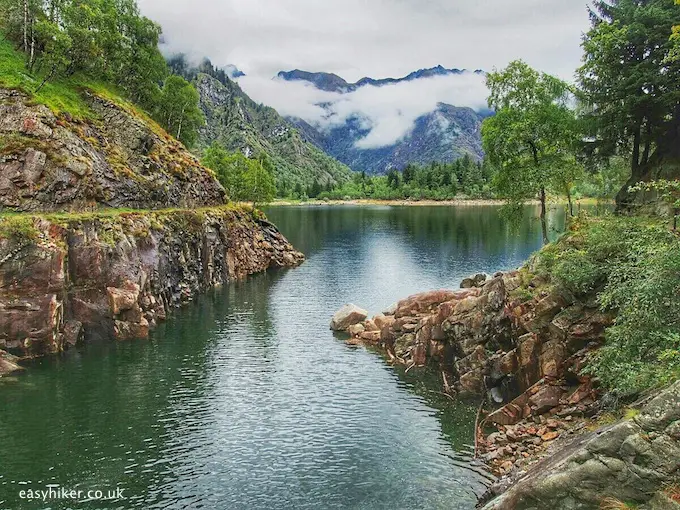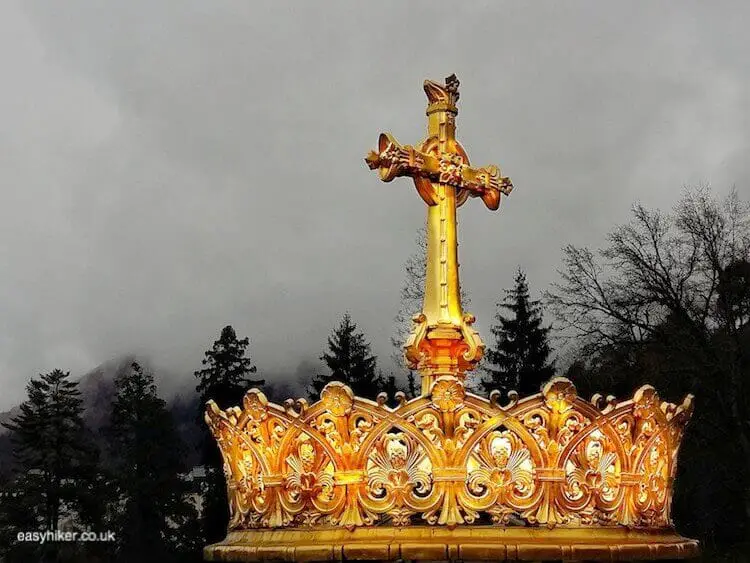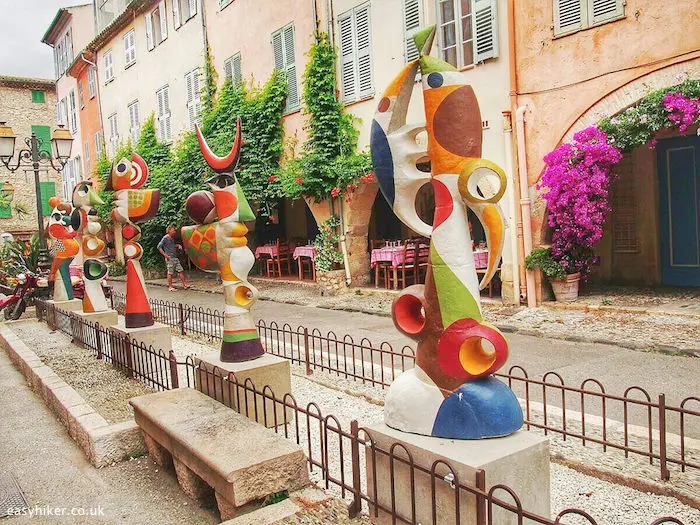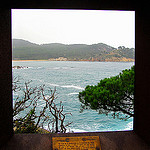Movement 4: the Adagio at the Danube in Bratislava
… which is just another word for “taking it very, very easy”
On its way from the Black Forest to the Black Sea, the Danube passes through ten countries: there are longer rivers in the world, but none that are more international.
Can you name all ten states that can lay claim to a section of the Danube? (The one country almost everybody forgets is Moldavia which owns a stretch of only 600 metres. The Danube does not so much flow through Moldavia as “drop in”, quite literally, before dropping out again.)
Another country on the route that many people will forget – wrongly assuming that the Danube flows directly from Austria into Hungary – is Slovakia, despite the fact that the country owns a fairly substantial stretch of the river (with a total length of 172 km) and that Bratislava, its capital and major city, was built on the Danube’s banks.
Bratislava’s town centre is pretty, having been thoroughly spruced up since the country became independent (and a member of the EU) …
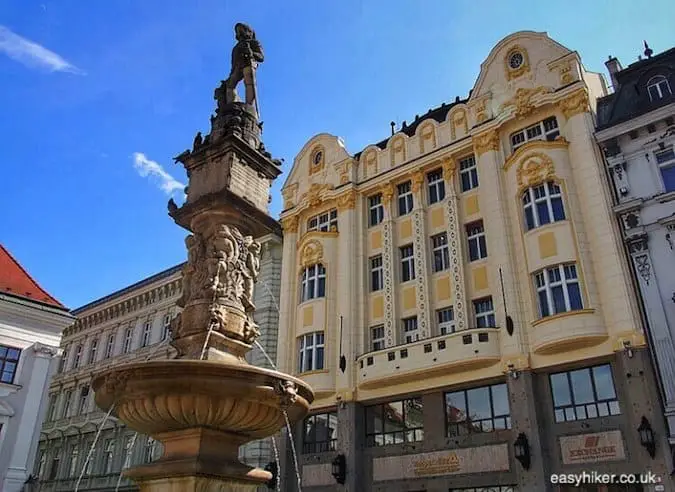
… although not all scars from long years of neglect have healed.

Overall, however, the Old Town is busy and lively …
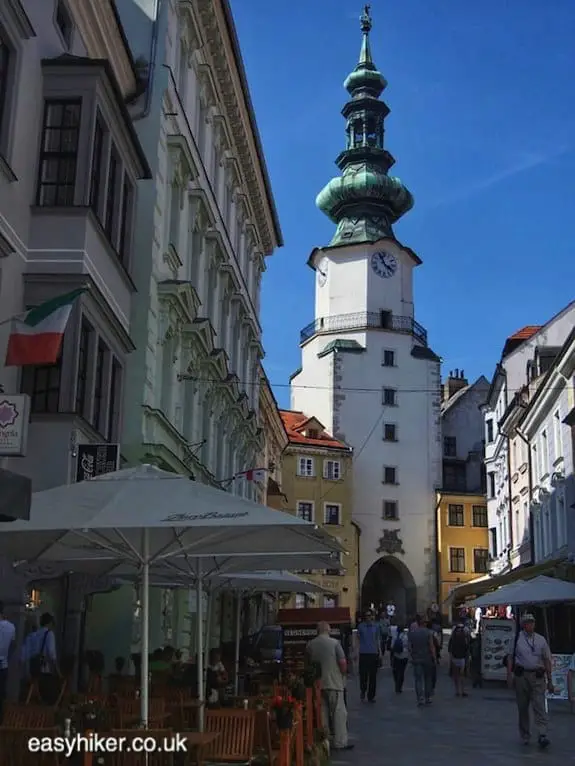
… as well as visibly proud of her mix of architectural heritage.
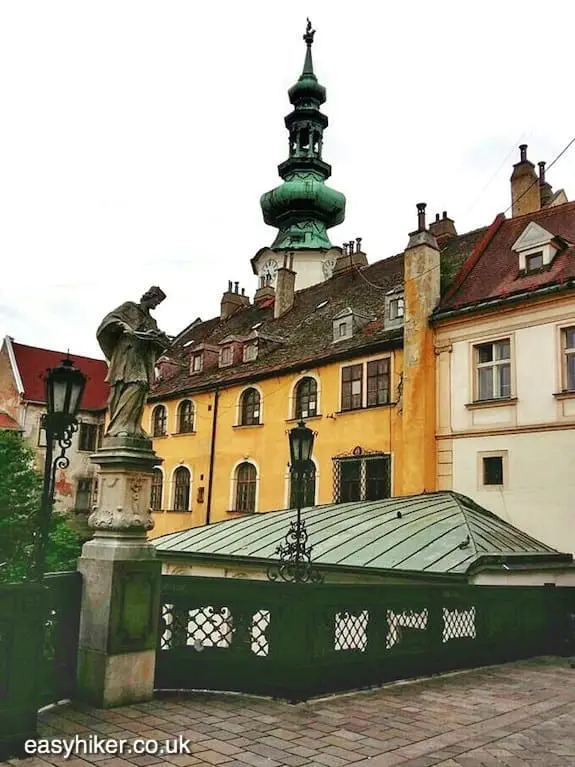
For us, Bratislava was the last stage on an eight-day whistle-stop tour through four cities and three different countries, so we felt a little tired and decided in favour of the easiest of easy walking options: the brief stroll up to Bratislava Castle. This had, as we found out, the added advantage that the route took us past several highly recommended restaurants including the truly excellent Zelen y Rodriguez.
The fortress-like castle was built in the 1500s on a hill that overlooks the city, …
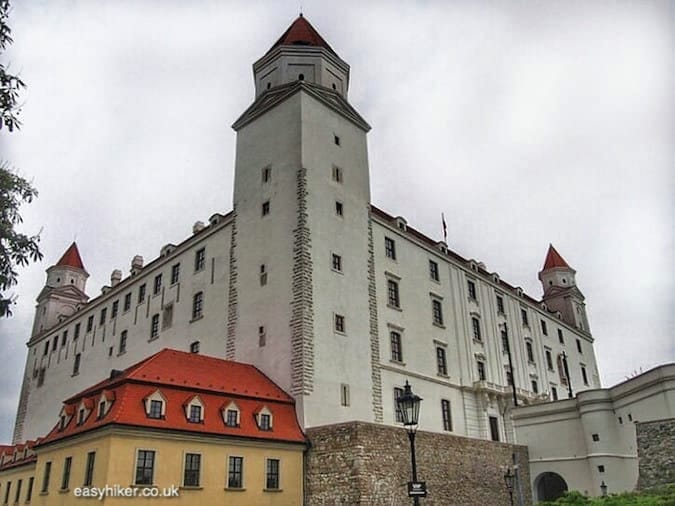
… although only the area around Sigismund Gate still remains from that period.
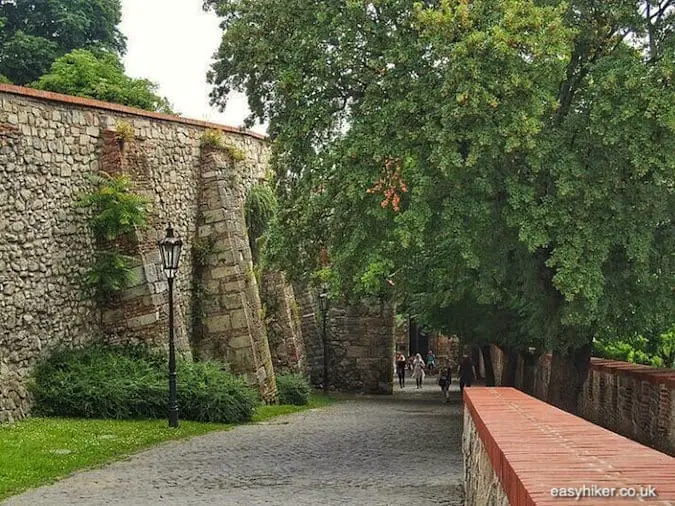
Like the city at its feet, the castle and its history has been mainly shaped by Austrians and Hungarians. It was extended to its current size and dimensions by the Empress Maria Theresia who thereby fulfilled a promise to have a palace in “both parts of her kingdom” – the “other” part in question being Hungary. This turn of phrase is a powerful reminder that, for many centuries, the Slovakia of today was considered a part of Hungary, or, more precisely, that part of Hungary in which the countryside (as opposed to the cities) had a mainly Slavic population.
Today, the castle houses the Slovak Parliament, with the statue of the semi-mythical 9th century warlord Svatopluk, defender of the Slovak realm, giving the building a duly nationalist note, although from a certain angle it looks as though brave Svatopluk was charging Bratislava’s New Town on the far side of the river rather than Slovakia’s treacherous enemies.

What about the Danube in Bratislava then? Well, there is not all that much to say. You see the river from the castle, …
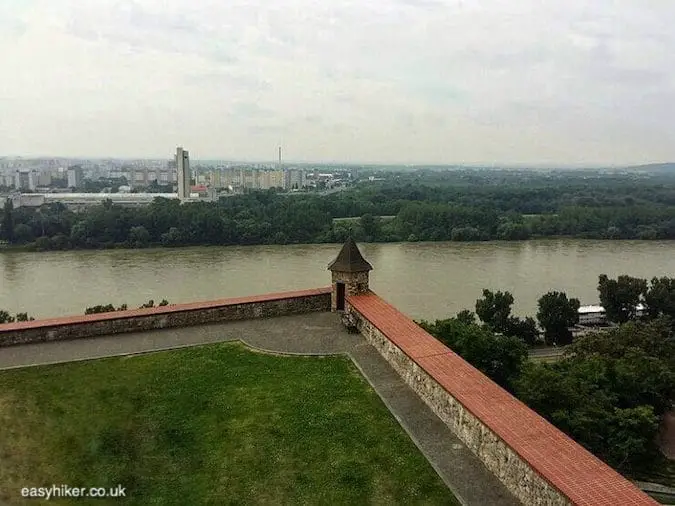
… but other than that, you do not get to feel its presence a lot when you stroll through the city. This is because the Danube does not actually flow through the old town which was exclusively built on the left bank rather than straddling either side of the Danube. It must also be said that the decision to seal the river off from the old town with a busy highway has certainly not helped to integrate it into the townscape and into the life of the city.
Finally, no post about Bratislava would be complete without an account of her tourists. Bratislava has carved out twin niches at opposite ends of the tourism market: the river cruise and the stag party.
Most of the foreigners you meet in the town centre belong to one of these two groups. The typical river cruiser is over 60, affluent and American, while the stag party tourists are much younger, mainly English and universally male except for the occasional blow-up doll that they may be waving in the faces of bewildered local shoppers, providing them with a delightful sample of English humour.
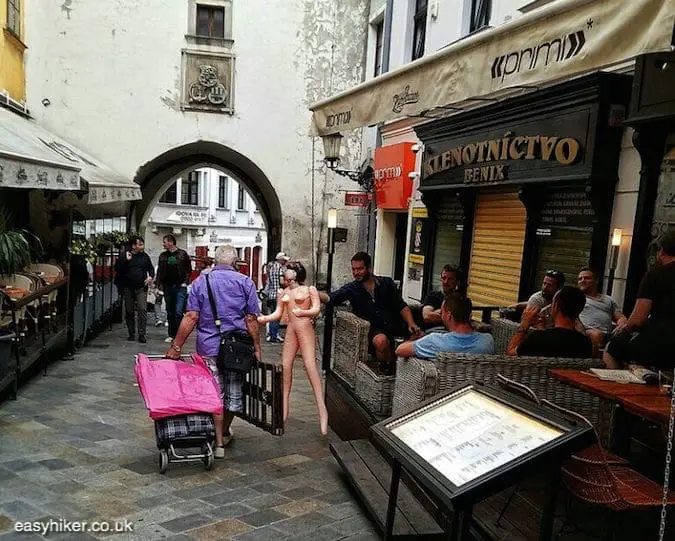
The two groups may differ in many ways, but do so most dramatically in their attitude to the Danube. For the cruisers, the river is the entire raison d’etre of their trip: they would not be here if it were not for the Danube. Little Bratislava just happened to be on the way of their boat’s route from Vienna to Budapest, so they thought they might as well get offboard for a few hours. Ask them in four weeks time, and they will probably not be able to tell you which country it was they visited that afternoon.
Stag party tourists, conversely, are here for two different reasons: cheap flights and cheap beer. Ask them right there and then what country they are in, and my guess is that half of them would not be able to tell you: too drunk, too English. Ask them what river flows through town, and they would probably tell you that it was “the river of beer”.
Bratislava bears all that with a shrug and a smile, which is not the least of her charms. She will remember that some of her other invaders had manners that were considerably worse. Svatopluk could probably tell a story or two about that, too.


